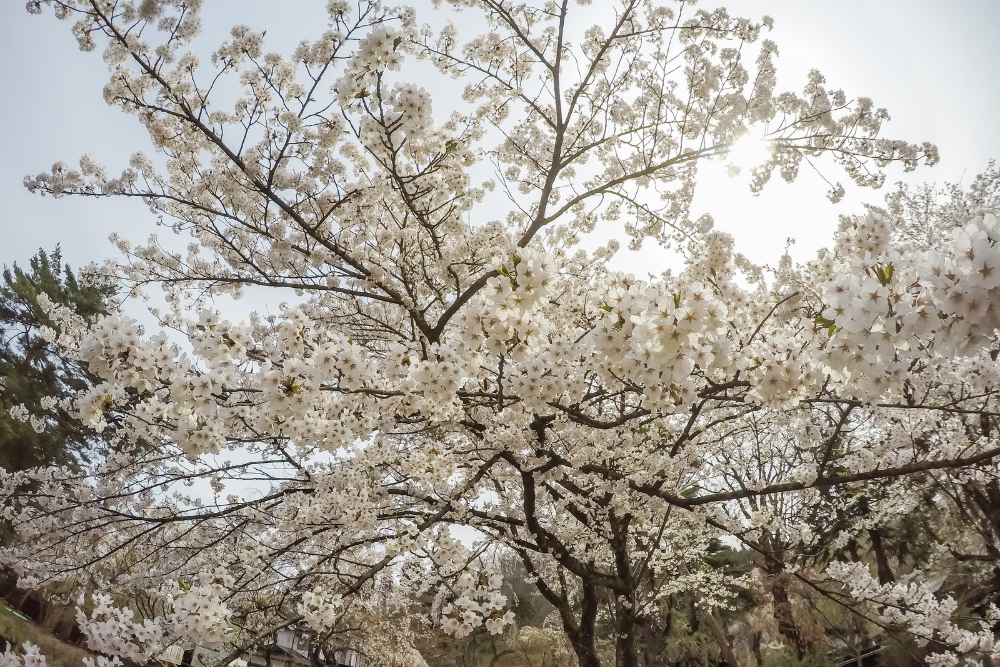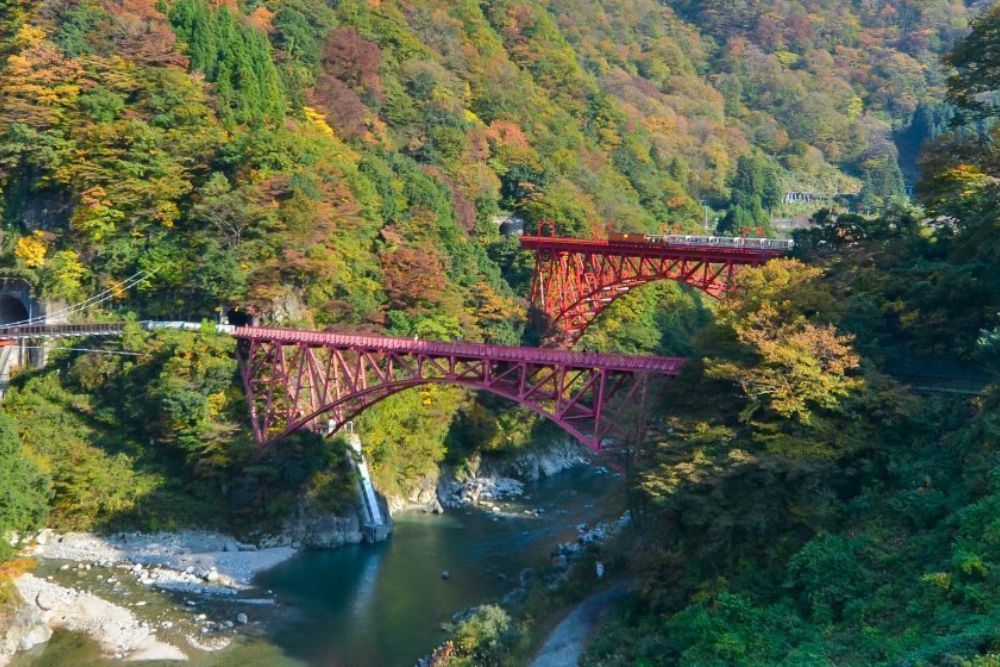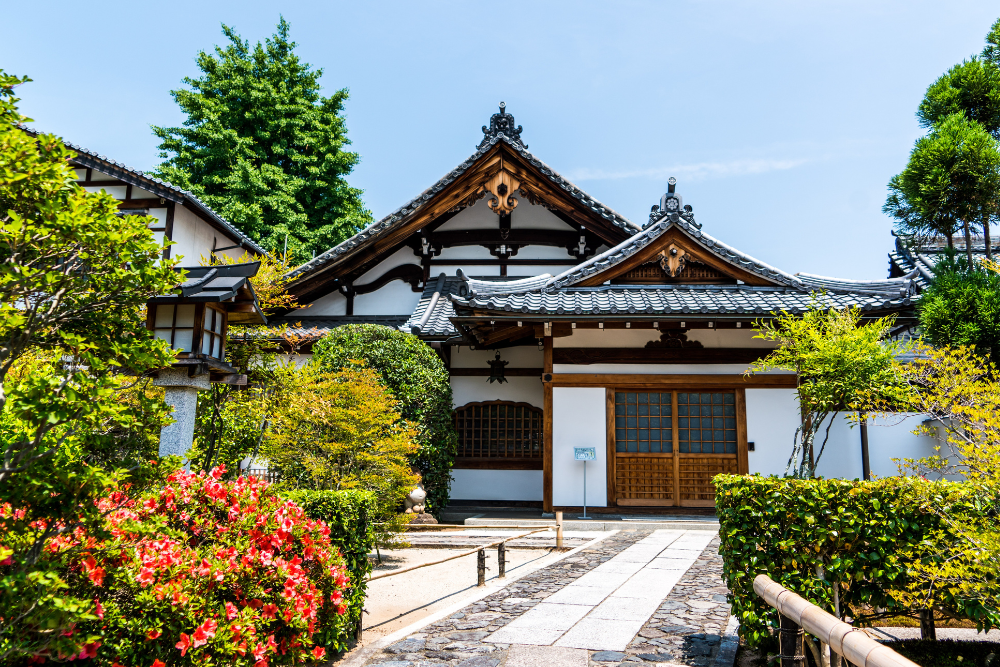While famous cherry blossom spots like Tokyo’s Ueno Park and Kyoto’s Maruyama Park draw massive crowds, Japan’s countryside is home to some of the most breathtaking and peaceful sakura locations. From remote mountain villages to ancient castle ruins, these hidden gems offer a serene and intimate cherry blossom experience far from the bustling tourist hotspots.
If you’re looking for a quieter way to enjoy Japan’s sakura season, here are some of the best off-the-beaten-path cherry blossom destinations in the Japanese countryside.
1. Miharu Takizakura (Fukushima) – The Thousand-Year-Old Sakura Tree
One of Japan’s most famous single cherry trees, Miharu Takizakura (Waterfall Cherry Tree) is over 1,000 years old and stands majestically in the countryside of Fukushima Prefecture.
Why Visit?
- This massive weeping cherry tree is considered one of Japan’s top three cherry trees (Nihon Sandai Zakura).
- Its drooping branches, covered in pink blossoms, create a waterfall-like appearance.
- Located in the quiet countryside, it offers a truly unique and peaceful hanami experience.
Best Time to Visit: Mid to late April
How to Get There: Take the JR Ban’etsu East Line to Miharu Station, then a 15-minute taxi ride.
2. Kakunodate Samurai District (Akita) – Sakura Among Samurai Homes
This well-preserved samurai town in northern Japan is known for its historical streets lined with weeping cherry trees. Unlike the busy parks in Kyoto, Kakunodate offers a tranquil hanami experience while walking among Edo-period samurai mansions.
Why Visit?
- Over 400 weeping cherry trees create a romantic atmosphere along the town’s traditional streets.
- The area is less crowded than Kyoto’s old districts, allowing for peaceful cherry blossom viewing.
- The nearby Hinokinai Riverbank is also lined with stunning sakura trees.
Best Time to Visit: Late April to early May
How to Get There: Take the Akita Shinkansen to Kakunodate Station. The samurai district is a 10-minute walk away.
3. Mt. Yoshino (Nara) – A Mountain Covered in 30,000 Cherry Trees
While not entirely unknown, Mt. Yoshino remains one of the most spectacular mountain hanami spots in Japan. Located in rural Nara Prefecture, it features layers of cherry blossoms covering the slopes, creating a breathtaking landscape.
Why Visit?
- Over 30,000 cherry trees bloom in stages, offering weeks of beautiful scenery.
- Unlike crowded city parks, this vast area allows for a more immersive nature experience.
- There are multiple viewing points, including Hanayagura Observatory and the historic Kinpusen-ji Temple.
Best Time to Visit: Early to mid-April
How to Get There: Take the Kintetsu Yoshino Line to Yoshino Station, then ride the ropeway or hike up the mountain.
4. Iwakura River (Fukui) – A Secret Riverside Sakura Walk
For those looking for a hidden riverside sakura experience, the Iwakura River in Fukui Prefecture offers a peaceful alternative to crowded locations like Kyoto’s Philosopher’s Path.
Why Visit?
- The sakura trees stretch for over 2 kilometers along the riverbanks, creating a picturesque tunnel of pink.
- The area is largely undiscovered by tourists, making it ideal for a quiet hanami stroll.
- Nearby, you can explore the charming streets of Echizen City, known for its traditional crafts and local cuisine.
Best Time to Visit: Early to mid-April
How to Get There: Take the JR Hokuriku Main Line to Takefu Station, then walk 15 minutes to the river.
5. Hirosaki Castle (Aomori) – Sakura Reflections in the Moat
Located in the northern Tohoku region, Hirosaki Castle is one of Japan’s most breathtaking and underappreciated cherry blossom spots. Unlike Kyoto’s famous castle gardens, Hirosaki offers a peaceful yet spectacular hanami experience.
Why Visit?
- The castle is surrounded by 2,600 cherry trees, creating one of Japan’s best castle sakura landscapes.
- The moat fills with fallen cherry petals, creating a mesmerizing “pink carpet” effect.
- A boat ride through the moat offers a unique perspective of the blossoms.
Best Time to Visit: Late April to early May
How to Get There: Take the JR Ou Main Line to Hirosaki Station, then take a 15-minute bus ride to Hirosaki Park.
6. Tottori Hanakairo Flower Park (Tottori) – Sakura with Mountain Views
For those who want to escape the typical hanami crowds, Tottori Hanakairo Flower Park offers a stunning sakura experience with a backdrop of Mt. Daisen.
Why Visit?
- The cherry blossoms are complemented by seasonal flowers blooming throughout the park.
- Views of Mt. Daisen, known as the “Mt. Fuji of the West,” create a dramatic sakura setting.
- The park is rarely crowded, allowing for a relaxing hanami experience.
Best Time to Visit: Late March to early April
How to Get There: Take the JR San’in Main Line to Yonago Station, then a 20-minute bus ride to the park.
7. Kurobe Gorge (Toyama) – Sakura by the River and Mountains
For those who love nature and adventure, Kurobe Gorge offers a spectacular cherry blossom experience in the mountains. The area is famous for its scenic train ride, river views, and sakura-dotted cliffs.
Why Visit?
- The Kurobe Gorge Railway offers a breathtaking sakura train ride through deep valleys.
- Unlike city parks, this area allows for a truly immersive nature hanami experience.
- The region’s hot springs (onsen) provide the perfect way to relax after viewing cherry blossoms.
Best Time to Visit: Mid to late April
How to Get There: Take the JR Hokuriku Shinkansen to Kurobe-Unazukionsen Station, then ride the Kurobe Gorge Railway.
Conclusion
Japan’s cherry blossoms are not limited to crowded city parks. By venturing into the Japanese countryside, you can discover hidden sakura gems that offer a peaceful, scenic, and unforgettable hanami experience. Whether it’s a 1,000-year-old cherry tree in Fukushima, a samurai town in Akita, or a mountain covered in blossoms in Nara, these hidden locations provide a unique and serene way to enjoy Japan’s most beautiful season.
For a truly special hanami experience, escape the crowds and explore Japan’s lesser-known cherry blossom wonders.












